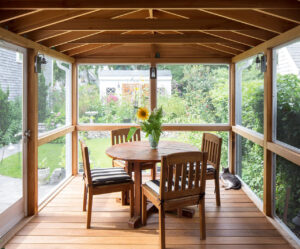
Reduce Moisture Levels in Your House
Homeowners struggle with managing moisture levels throughout the year. Finding the optimal level of humidity is a constant balancing act. And if you’re just trying random things you read online, you could not even get close to the solution.
Fortunately, we have collected a list of the most efficient and practical ways to lower the moisture levels in your home. To begin, let’s define moisture control and discuss why it’s so crucial.
What Is Moisture Control?
Moisture control is exactly as it sounds. The aim is to adjust the relative humidity in your house to a level that is comfortable for you.
Humidifiers, dehumidifiers, air conditioners, and fans are just some of the tools at your disposal for achieving this. Overall, dampness prevention contributes to a healthier home environment.
For what reasons is it crucial to keep moisture under control?
Your health is negatively impacted when the relative humidity within your home is either too high or too low.
Homeowners may notice an increase in their usual symptoms of allergies, asthma, headaches, coughing, and even trouble sleeping.
Mold and mildew, water stains, and damaged furniture are just some of the issues that homeowners may encounter. Fortunately, moisture control prevents all of these problems.
How to Prevent from Moisture in Your Home
Maintain a 40–60% Indoor Humidity Range
We may have said it before, or even several times, but we’ll say it again just in case!
The sweet spot for indoor humidity is between 40 – 60%. If the humidity in your home gets too high or too low, it could be harmful to your health.
Consider purchasing an indoor air quality monitor if you are unsure of your home’s position on the spectrum.
Fix Leaks
This one might be too simple to explain.
Water damage can occur in your home if leaks cause water to pool in low-lying regions. Humidity is produced when water that has accumulated within your house evaporates.
A leak may seem like a minor problem, but it can quickly cause your home to feel like an oppressive swamp.
Ventilate your bathrooms and kitchen more
Exhaust fans are standard in most modern kitchens and bathrooms. Exhaust fans can be thought of as spot ventilation devices or localized mechanical ventilation systems.
Everyday actions like cooking and showering generate humidity, and this moisture has nowhere to go. Humidity can build up quickly in closed spaces, but exhaust fans can keep the air moving and keep things dry.
Keep the humidity down by maintaining proper operation of these targeted ventilation systems.
Outdoor Ventilation for Clothes Dryers
You have a major issue on your hands if your dryer does not vent directly to the outside.
Humid air is released from the dryer as a byproduct of drying wet garments with heat. All that moisture is kept within if the vent is not aimed outside. The good news is that this is easy to resolve.
In little time at all, after having the vent redirected by an HVAC professional, your home will be comfortably cool and dry.
Reduce the Number of Indoor Plants
It’s a common misconception that having plants indoors can magically improve the quality of the air inside your home. Indoor plants typically have the opposite effect, or no effect at all, on air quality. Also, through a process called evapotranspiration, houseplants increase humidity in a room.
Both evaporation and transpiration are at work here. When moisture in the soil evaporates, we have evaporation. Plants lose water by transpiration when moisture evaporates from their roots, leaves, and blossoms. Therefore, eliminating houseplants will result in drier air inside.
Use Air Conditioning When Outdoor Humidity Levels Are High
Do you know that air conditioners can also remove moisture from the air? In order to remove moisture from the air, an evaporator coil must circulate heated air over it.
As a result, the warm air is cooled and the condensation is collected in a drain pan. On hot and humid days, the cool, dry air that remains creates a pleasant environment.
Heated Rooms in winter
If you heat your home unevenly, you won’t be able to save as much money or energy as you’d like. If you want to heat just the bedroom and living room, you’ll need to block off the vents in the rest of the house. A significant temperature drop will occur in the rooms where air vents have been sealed off. As cold air from other room’s seeps in, your furnace has to work more to heat your bedroom and living room. Furniture may warp, ice may form on windows, floors may crack, pipes may freeze, and moisture may cause tiny gaps to freeze and grow, in addition to the possibility of system failure. All of which can increase the difficulty of regulating moisture and the expense of fixing any resulting damage. Consequently, it is crucial to heat all areas at the same degree.
Fix Gutters and Downspouts
Water that falls on your roof should be channeled away from your home via gutters and downspouts. Water damage can occur to your home if these gadgets aren’t aimed away from the building. It’s a bad idea to let water collect close to your house’s foundation. The presence of too much moisture within might lead to a variety of problems. Fixing any leaky gutters or downspouts and directing water away from your house is a simple approach to prevent this problem.
Install Vapor Barriers in Basements and Crawl Spaces
Water and excessive humidity levels are detected by a sump pump, which then pumps the water away from your home’s foundation and into a nearby drain or other predetermined spot.
The movement of moisture is slowed by a vapor barrier, which is a special type of material. Both are useful in basements and crawl spaces, which are typically damper than other parts of the house because of their proximity to the ground.
Controlling Moisture in Your Home
You can now effectively manage moisture through these methods. Don’t let excess moisture take control of your home.






No comment yet, add your voice below!